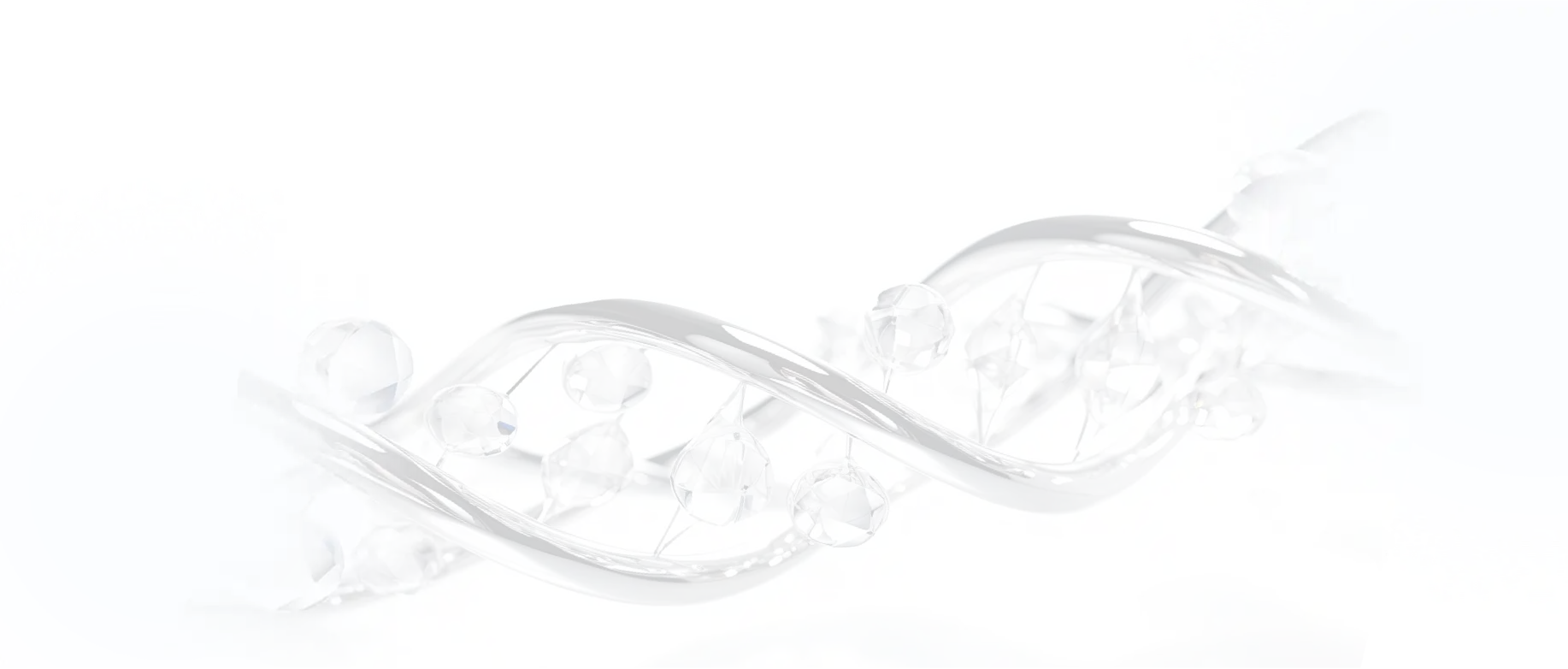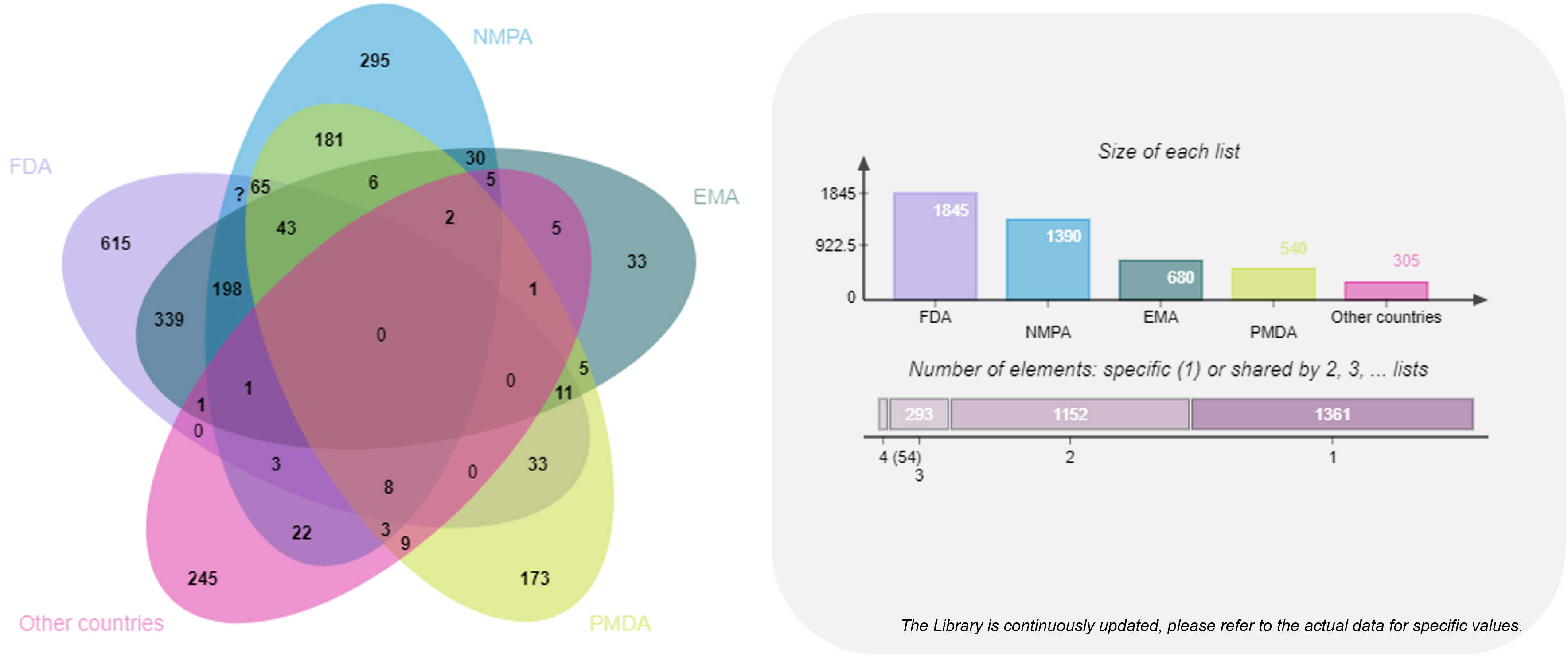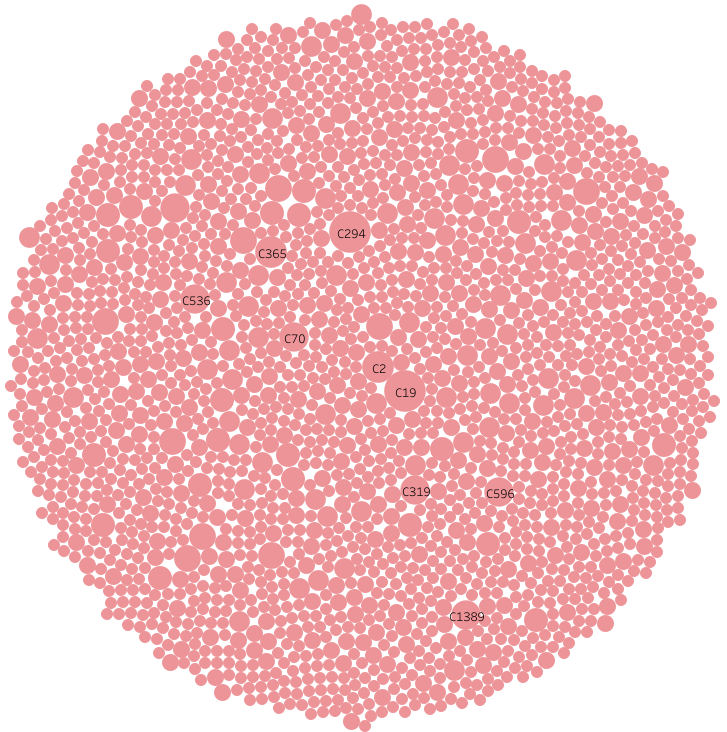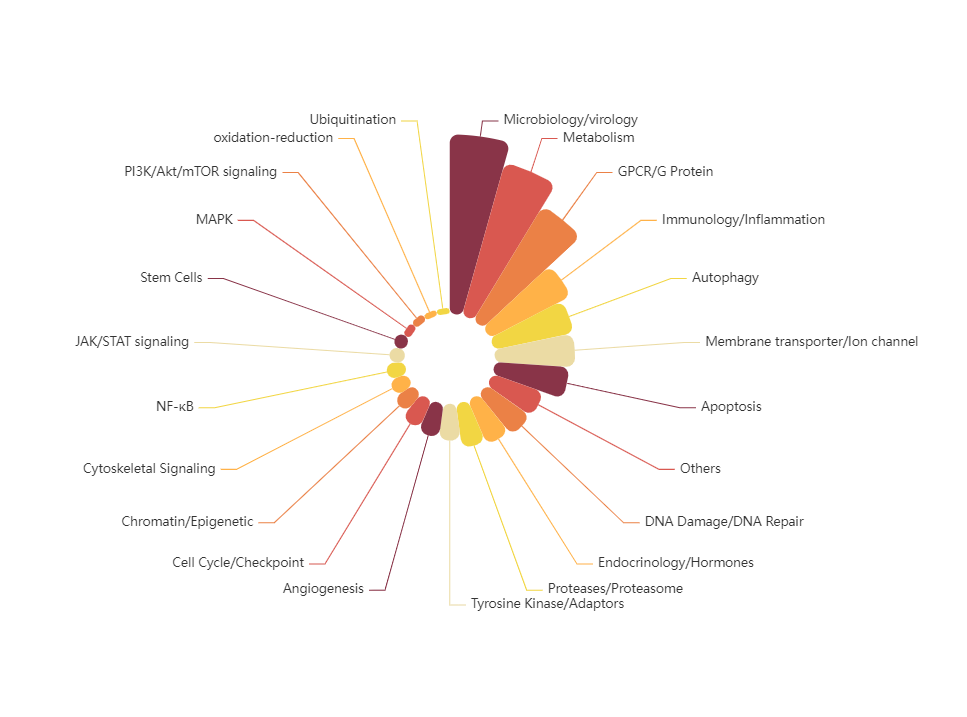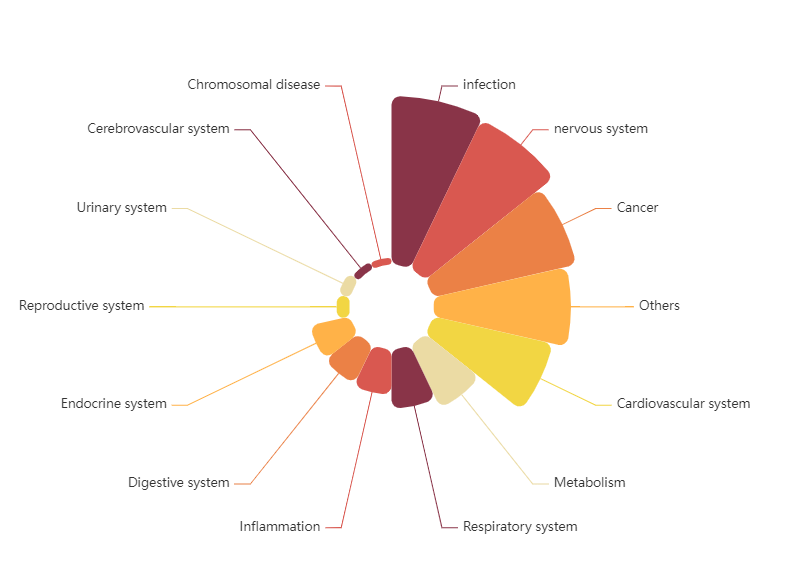High-Standard Entry Criteria
TargetMol’s Approved Drug Library is curated with stringent entry criteria to ensure that every compound in the collection is structurally well-defined and of high purity. Multiple analytical techniques—such as NMR, HPLC, and LCMS—are employed to verify compound integrity. Through a rigorous multi-step screening process, we exclude compounds with ambiguous structures (e.g., mixtures and polymers) and non-active agents such as sunscreens, contrast agents, and inorganic compounds. This helps reduce ineffective screening efforts and unnecessary resource consumption.
This library includes only FDA-approved small molecule drugs. For compounds approved by other regulatory agencies (such as PMDA, EMA, and NMPA), please refer to our L4200 FDA-Approved Drug Library and L1020 EMA Approved Drug Library.
Drug Approval Authorities
Significant Structural Diversity
TargetMol’s Approved Drug Library exhibits remarkable structural diversity, offering substantial advantages in drug discovery. Based on MACCS fingerprint analysis, the library can be categorized into 2,205 classes, effectively covering a broad chemical space. The library includes a wide variety of compounds, ranging from simple to highly complex chemical structures. This diversity provides a wealth of possibilities for identifying lead compounds with high affinity and specificity for target proteins, significantly advancing drug innovation.
Library Diversity Analysis
Diverse Compound Selection
TargetMol’s Approved Drug Library is characterized by not only a high degree of chemical diversity but also broad biological representativeness. The compounds included in this library target a wide range of key signaling pathways, such as kinases, G protein-coupled receptors (GPCRs), ion channels, and epigenetic regulators. It comprehensively covers multiple therapeutic areas, including cancer, immune disorders, neurological diseases, metabolic disorders, and infectious diseases.
Approximately 20% of the approved drugs in the library are natural products, comprising monomeric compounds isolated from plants, animals, and microorganisms. This library serves as an ideal resource for drug repurposing, lead optimization, and the development of new therapeutic strategies. It supports the full spectrum from basic research to translational medicine, accelerating the efficient development of innovative drugs.
Pathways And Disease Types Composition
Types of Approved Natural Products
Regular Updates to Compound Libraries
TargetMol ensures compound libraries stay at the forefront of science by regularly updating our database to include the latest approved and marketed drugs.
Flexible Packaging Options
TargetMol provides a variety of standard packaging sizes (such as 30 μL, 50 μL, 100 μL, 250 μL, and 1 mg), and offer customized packaging solutions tailored to specific needs.
Personalized Custom Services
TargetMol offers fully customized screening services, including the design and synthesis of compound libraries. Our highly flexible service is designed to efficiently meet the unique needs of scientists and researchers.
 Your shopping cart is currently empty
Your shopping cart is currently empty


